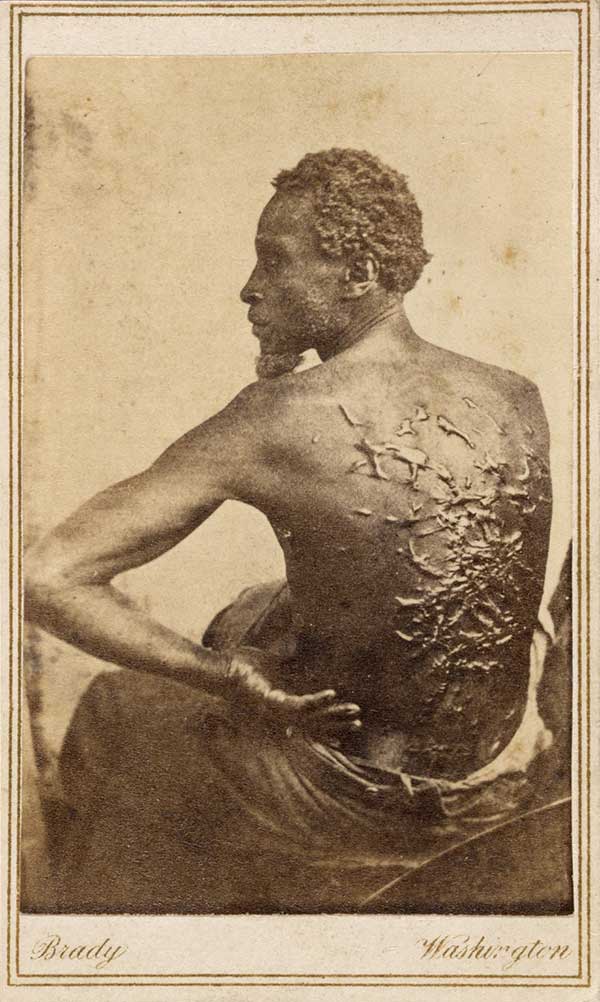Peter (formerly identified as "Gordon")

Albumen silver print
Although fugitives from slavery sought and received protection in Union camps as early as May of 1861, the Confiscation Act of 1862 formally declared that slaves seeking refuge behind Union lines were to be deemed captives of war and granted their freedom. Many of these freed slaves, known as “contraband,” joined the Union fight.
In March 1863, a man known only as Peter escaped from slavery on a Louisiana plantation and after a harrowing journey found safety among Union soldiers encamped at Baton Rouge. Before enlisting in a black regiment, he was examined by military doctors, who discovered horrific scarring on his back—the result of a vicious whipping by his former overseer. This photograph documenting Peter’s condition created a sensation when it reached the public and quickly became one of the most powerful proofs of slavery’s brutality. As one journalist declared, “This Card Photograph should be multiplied by 100,000 and scattered over the States. It tells the story in a way that even Mrs. [Harriet Beecher] Stowe can not approach, because it tells the story to the eye.”
On Independence Day 1863, in the immediate aftermath of the Battle of Gettysburg, Harper’s Weekly featured several articles concerning recent action in the field by black troops fighting for the Union cause, including an account of Peter’s escape from bondage and his subsequent military service. Based on photographs, the images accompanying the article documented Peter’s metamorphosis from fugitive slave to U.S. soldier, punctuated by a view of his horribly scarred back.
Sergeant Peter was reported to have fought bravely in the Union assault on Port Hudson in July 1863, as part of General Benjamin F. Butler’s Louisiana Native Guards, a regiment made up entirely of free black recruits. Nothing further is known about his life.
Learning to Look
- Describe Peter’s pose in this photograph. Why do you think the photographer posed him in this way?
- What is the focal point of this photograph? What do you think the photographer intended you to notice first?
- Describe the expression on Peter’s face. What might he be thinking?
- What is your first reaction to this image? How does it make you feel? What elements in the photograph provoke your reaction?
- Why do you think this photograph was taken? How might it have been used during the Civil War?
Suggested Activity
This photograph was used by abolitionists to provide compelling visual proof of slavery’s brutality. Imagine that you are an abolitionist orator in 1863. Write a speech in which you argue that ending slavery must be a primary goal of the Civil War, incorporating this photograph as evidence to support your point.